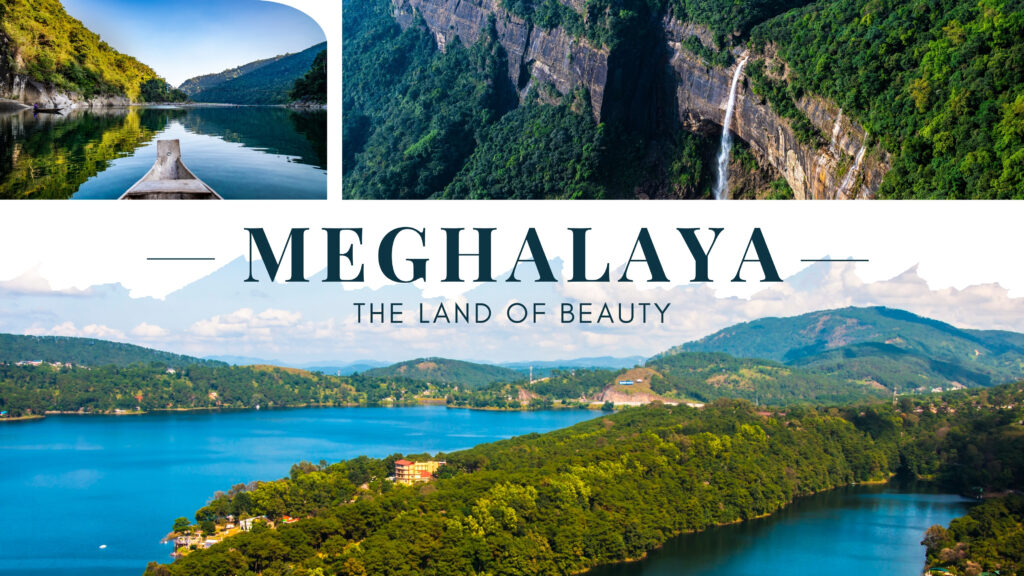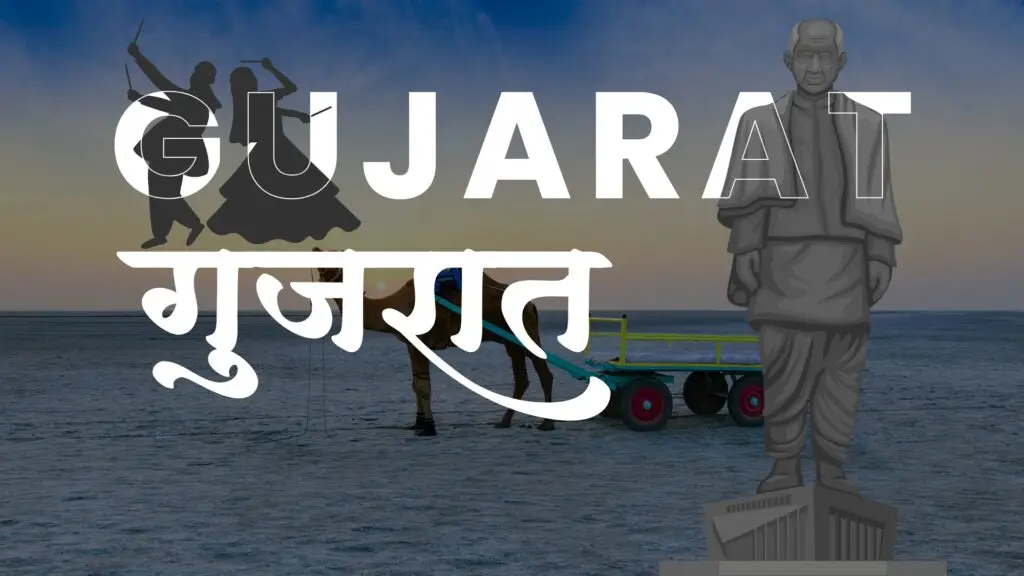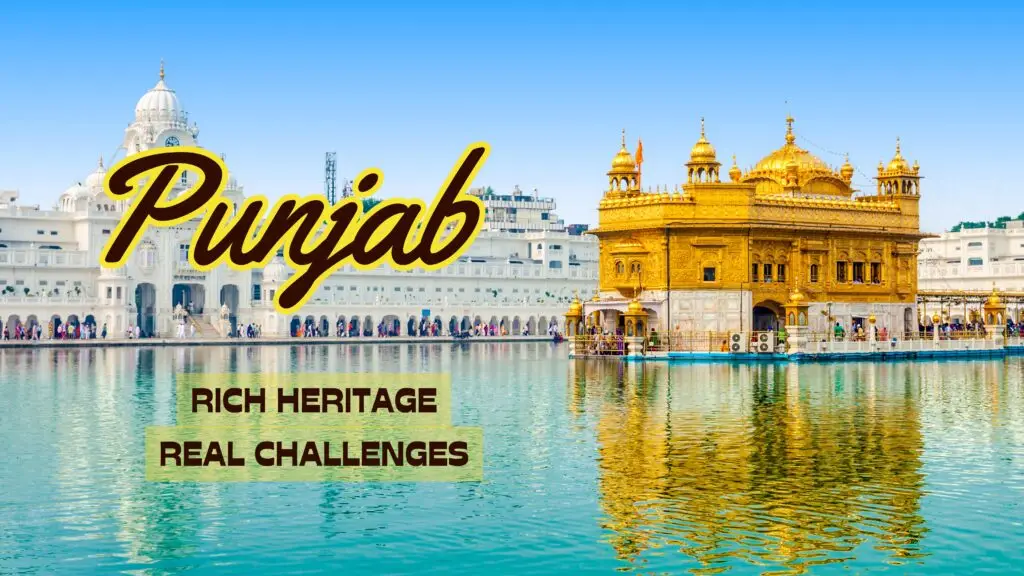Meghalaya is a state that fulfils its name meaning of clouds in Sanskrit, the Abode of the Clouds due to its positioning in the Garo, Khasi and Jaintia hills. A jewel of North East India, this stunningly beautiful state is a world of myth and magic where lush, mist-covered mountains are always hidden in the mists, tumbling waterfalls plunge into clear, pristine pools and living root bridges span fast flowing rivers. Here, nature and culture are bonded and the ancient custom is still prominent especially in the matrilineal system unique to that place.
A picturesque land is not the only character that Meghalaya portrays, but it also tells of the level of harmony that exists between its people and the clean environment that they cherish. And so here we are travelling to this magical land and discovering its fascinating past, deep culture, magnificent geography and their way to the sustainable and dynamic future.

A Storied Past
Meghalaya history is a rich tapestry in which the story of three major tribes found within the region are interwoven: the Khasi Garo and Jaintia. Their civilization was based on independent self-governing communities and it lasted centuries with each tribe possessing its own kingdom where they were ruled by chiefs or kings.
- British Period: In the 19 th century, the British came in and annexed the hill kingdoms but were allowed to continue governing themselves to some degree through local chiefs. Shillong became an administrative and educational hub in the Assamese region and the British made it the capital of Assam.
- Post-Independence & Statehood: The constituent members of the Khasi, Garo, and Jaintia Hills of the hill districts of Assam were not entirely satisfied with their status in the larger state after the independent India came to power in 1947. This resulted in non-violent campaign of a separate state. The government of India, through the Assam Reorganization (Meghalaya) Act of 1969, granted the region autonomy, and Meghalaya was finally carved out of Assam and became a full-fledged state on January 21, 1972.
This non-violent history of struggle over identity and state has bestowed the people of Meghalaya a sense of great pride and an attachment with their distinct cultural heritage that is unique.
Meghalaya’s Rich Traditions
The culture of Meghalaya is interesting mixture of customs of three largest tribes that inhabit the state as Khasi, Garo, and Jaintia people bring their traditions, languages, and festivities.
- Matrilineal Society: One of the most striking and distinctive characteristic of Khasi and Jaintia societies is that it is matrilineal system. In this scheme, the descent and inheritance is determined through the line of the mother. It is the younger daughter who inherits the family property and the children adopt the surname of their mother. Through this system, the woman has assumed a strong authority and influential role both at home and in society.
- Language: The tribes mostly speak Khasi, Garo and Jaintia. An official language of the state, English is a remnant of British rule and is spoken by most people, particularly in the cities, hence interacting with visitors can be very comfortable.
- Festivals: Meghalaya is a festival-land-most of the festivals in this land bearing close relationship with agricultural cycle and the folklore of the tribes.
- Wangala (Garo): A harvest festival dedicated to the Sun God, celebrated with music, dance, and traditional attire.
- Shad Suk Mynsiem (Khasi): A beautiful thanksgiving dance festival, often called the “Dance of Peaceful Hearts.”
- Behdeinkhlam (Jaintia): A vibrant festival celebrated to ward off plague and evil spirits.
- Arts & Crafts: The state is established on its traditional handcraft and it forms part of its culture.
- Weaving: The tribal patterns when spun into beautiful shawls using conventional techniques like weaving (especially cotton and silk) make wonderful jackets and cloth.
- Cane and Bamboo Work: Baskets, hats, other items of like kind are skilfully made of bamboo and cane.
- Wood Carving: Fine wood carvings are created on both ornamental and ritualic lines.
- Music and Dance: Folk dance and music forms the focal point of the cultural festivity. Traditional attire with complex head gear and jewelry is normally used to perform the dances. Such instruments are drums, flutes and stringed instruments, which are also traditional.
Nature’s Masterpiece
Meghalaya is an artwork masterpiece by nature, being characterized by its hills everywhere, mountainsides and cliffs as well as massive amount of water.
- Rainiest Place on Earth: Well, there is Mawsynram and Cherrapunji in the state that are also famously known as the wettest Place on Earth with a record breaking rainfall level. This dense rain causes the greenness of the state, many waterfalls and the special living root bridges.
- Water and Rivers: Meghalaya enjoys the title Land of Waterfalls. The Nohkalikai Falls (one of India’s tallest plunge waterfalls), Seven Sisters Falls, and Elephant Falls are just a few of the many stunning cascades. Places like the rivers including the Umngot are famous to have crystal clear water.
- Living Root Bridges: These bridges that are bio-engineered by the people of Khasi and Jaintia using the aerial roots of the Indian Rubber Tree make up a truly unique natural-cultural wonder. Nongriat is a UNESCO World Heritage Site in waiting and an amazing impress of the engineering prowess and patience of the human being with the bridge being the Double Decker Living Root Bridge.
- Caves: As a spelunker heaven, Meghalaya has a huge array of limestone and sandstone caves, among which the longest cave in India, the Krem Liat Prah, can be found.
- Biodiversity: It is a hot spot of biodiversity and unique flora and fauna exists, such as rare orchids, pitcher plants and a rich diversity of animal life.
Local people, and the state administration, are highly concerned with preserving their vulnerable ecology, ensuring ecotourism development and preserving forests and water reserves.
A Land of Wonder
Hospitality of Meghalaya is a legend. The hospitality and assistance of the people to the community is outstanding rendering the visitors a sense of being home. The travelers also find it easy to communicate with them since their literacy rate is high and they also speak English.
Meghalaya has a very real and off the beaten path tourism offering:
- Shillong: A very beautiful place, the capital city, that is commonly referred to as the Scotland of the East due to the hilly terrain and the agreeable climate. It is a music, fashion and food centre.
- Cherrapunji & Mawsynram: These two places are the wettest places on earth and it is highly recommendable to visit there to view spectacular water falls, to encounter lush greenery and also to view the famous living root bridges.
- Dawki: The town on the border of Bangladesh, well known by the transparency of its water in the river Umngot where boating becomes a necessity.
- Mawlynnong: referred to as the Cleanest Village in Asia, an example of community based cleanliness and ecotourism.
- Caves: Have a wild experience in historic caves of Meghalaya.
- Trekking and Nature Walks: It is paradise to a trekker as there are so many trails in its hills and forests.
The state government has been heavily investing in the enhancement of the tourism infrastructure, eco-tourism, and in marketing the state through its unique cultural and natural attractions to more people.
Challenges and The Future
Meghalaya is geographically and in developmental terms tackling a special set of problems:
- Infrastructure: A key challenge is the poor road connectivity particularly in the rural places.
- Environmental Protection: The ongoing need to maintain development, but also protect the weak ecosystem of the state is an issue that is always at hand. Lack of regulation in mining and clearing of forests has been a great concern in the past.
- Wise Use of Money: There should be an increased economic diversification in the development of more modern and sustainable sectors such as tourism, culture, horticulture and small-scale industries instead of completely relying on traditional agriculture.
- Waste management: The rising urbanization and tourism come with difficulties in disposing plastic and other garbage in its intact environment.
But there are ways forward as Meghalaya, is plotting a positive and long-term prosperity. Government is concentrating on:
- Road connectivity: Spending a lot of money on road infrastructure, new railway line and air connectivity.
- Sustainable Development: Development of sustainable agricultural techniques, ecotourism and forestation.
- Skill Enhancement: Ensuring that the youths are furnished with skills in hospitality, IT and other contemporary fields.
- Entrepreneurship: The North Indian region shares borders with Afghanistan and three of the major states and territories. The North Indian region shares borders with Afghanistan and three of the major states and territories.
Unmistakable Soul of Meghalaya
Meghalaya is one of those states which can truly be termed as paradise on earth. It is a country of unbelievable calm and harmonious living – of old customs and the new tale of unity. The fighting spirit of the populace, their attachment with the land and their rich cultural roots render Meghalaya as a very unique, and unforgettable experience. As the state goes on, it keeps on demonstrating that in the home of the clouds, deep sense of identity, society and success could help make a land of tranquility, grace and infinite opportunities




